It’s once again the first Wednesday of the month — this year has been flying by! — and time for Wildlife Wednesday, a meme hosted by Tina and her blog My Gardener Says… as a way to celebrate the wildlife in our gardens. My garden has seen a mixed bag over the past month as far as wildlife goes. Where do I begin? I guess I’ll start with the Red Admiral Butterflies (Vanessa atalanta) that have arrived in droves over the past week.
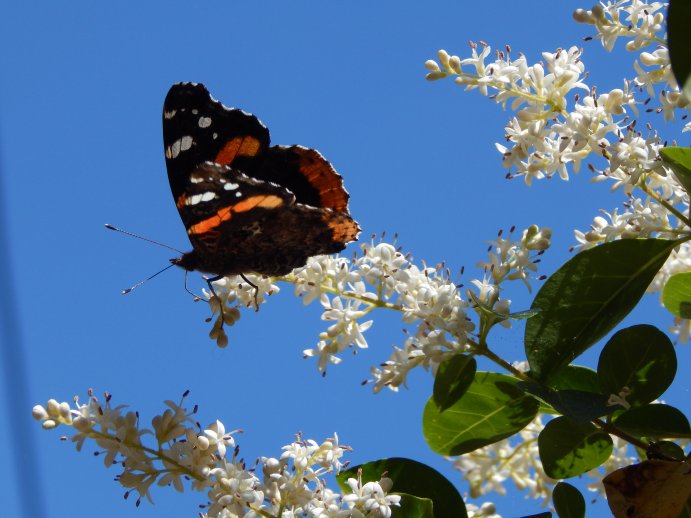
These butterflies have been visiting the flowers in my garden, as well as this large flowering shrub that extends over the fence from our neighbor’s yard. I think the shrub may be some type of privet. Perhaps Ligustrum vulgare? If anyone has a clue please let me know! The neighbors allowed it to grow from the wild and are unsure of what it might be.
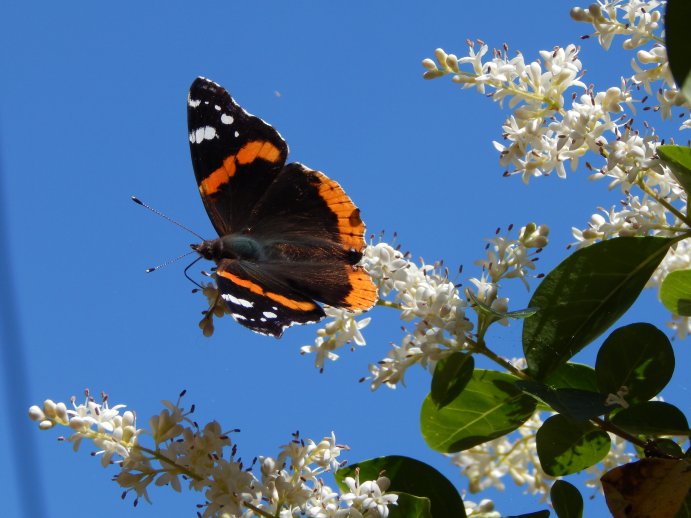
According to Butterflies and Moths of North America the Red Admiral Butterfly can’t survive extremely cold winters so most of North America must be recolonized each spring by southern migrants. Since there is a brood that winters from October through March in South Texas I guess these guys must be the “recolonizers”. Sounds like something out of a sci-fi movie!
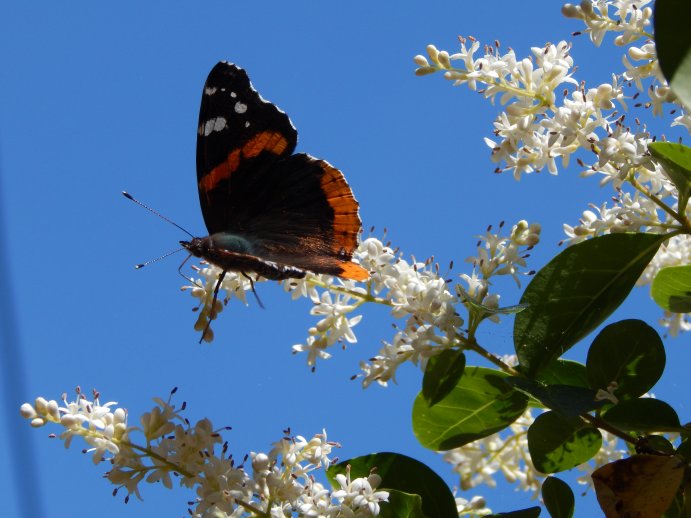
As I went through the photos of the Red Admirals I discovered these pictures of several American Lady Butterflies (Vanessa virginiensis).
Below are a couple Red Admirals and an American Lady feeding on nectar.
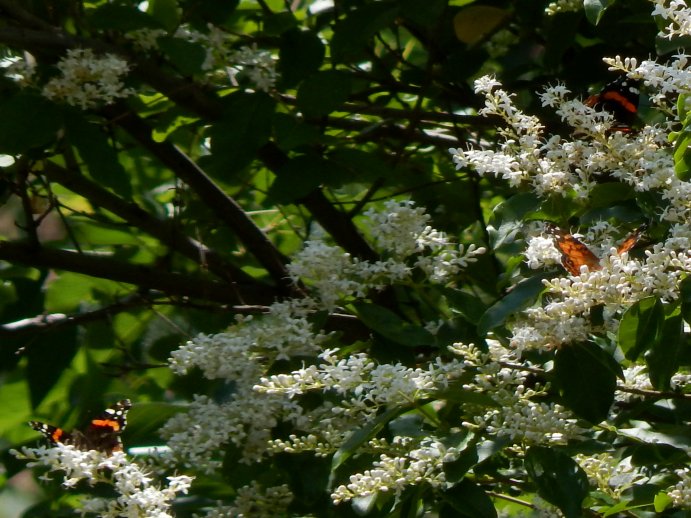
Here is a Gray Hairstreak Butterfly (Strymon melinus). This is a small butterfly that lives throughout North America. He’s sitting atop the blooms of a winter onion. These blooms appear to be attractive to a wide range of insects.
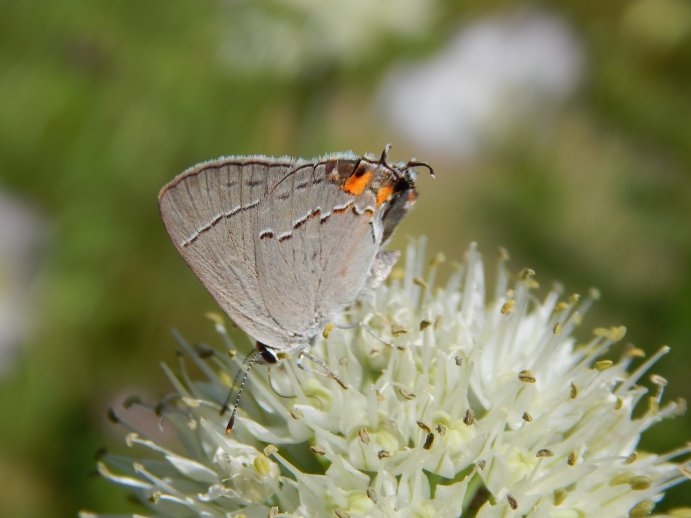
The Monarch Butterflies (Danaus plexippus) sailed through during the middle of April. I was able to snap just two photos of these beautiful creatures because the gusty winds didn’t allow them to really settle anywhere for very long.
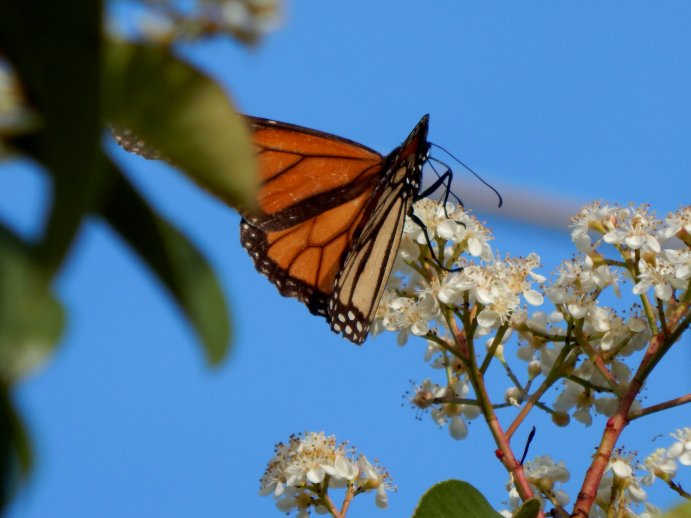
A family of Northern Cardinals (Cardinalis cardinalis) has made its home in our back yard for a number of years. Whether they’re the same birds each year is debatable, of course, but I like to believe they are! In past years its been difficult to get a good look at the young ones, but for the past week the little family has put on quite a show. (Click on any photo to enlarge!)
House Sparrows (Passer domesticus) seem to make their homes everywhere. Here a family is being raised in a birdhouse that our neighbor hung in the branches of a Shumard Oak (Quercus shumardii) in our side yard. It looks like mom and dad sparrow need to do a little housekeeping before their next brood comes along!
The Pine Siskins (Spinus pinus) are still with us. They continue to hang around the thistle feeders, seemingly not in a very big hurry to leave.
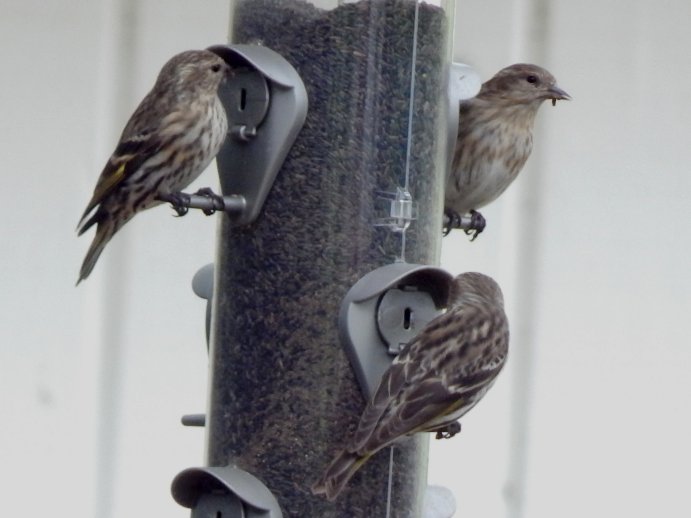
According to the Texas Breeding Bird Atlas:
“Migrating Pine Siskins arrive in Texas in late September (occasionally as early as August) and depart by late April with a few lingering to late May or even June. Most of the few breeding records for Texas are from late May and early June (Oberholser 1974, Lockwood and Freeman 2004).”
I suppose it won’t be long until they’re off to their summer homes!
These White-crowned Sparrows (Zonotrichia leucophrys) will also probably be heading north and west soon. In the meantime they’ve been visiting beneath the feeders, usually in the mornings and late afternoons.
We still had American Goldfinches (Spinus tristis) through the middle of April. They all seemed to be males, though, in various stages of molting!
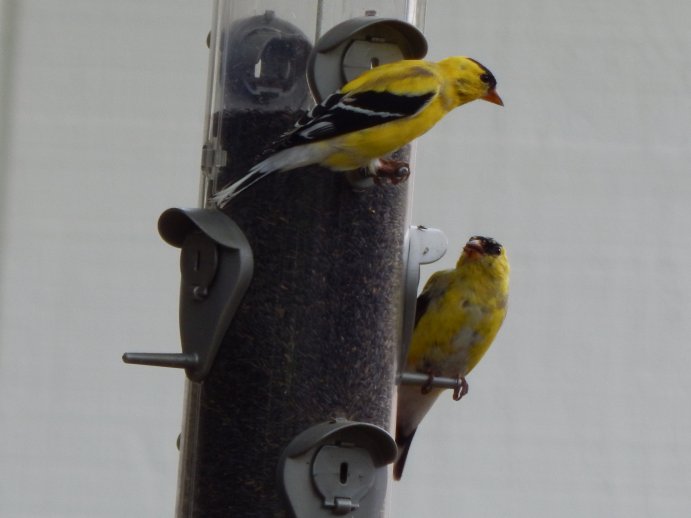
The bird on the right in the top photo is much shabbier looking than the one on the left. They appear to be in slightly different stages of molting. I guess they’d be classified as adult breeding males. The bird below is still very light-colored with a patchy head so he is probably in what’s known as a “transitional” state. These birds have all apparently flown the coop as none have been seen for several weeks. Perhaps these were just stragglers!
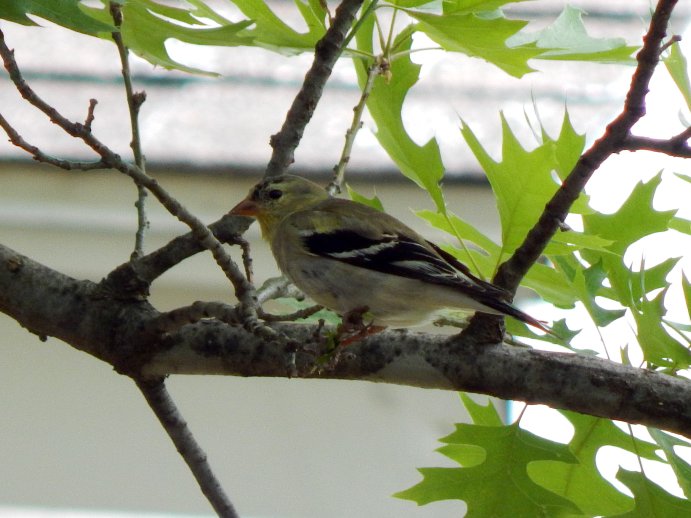
Below is a White-winged Dove (Zenaida asiatica) that discovered a handful of sunflower seeds I put out for the Cardinals. I love the way the sun reflected the dark pink of the feeder onto his plumage! The bright orange of his eye and the blue circling it are also very striking.
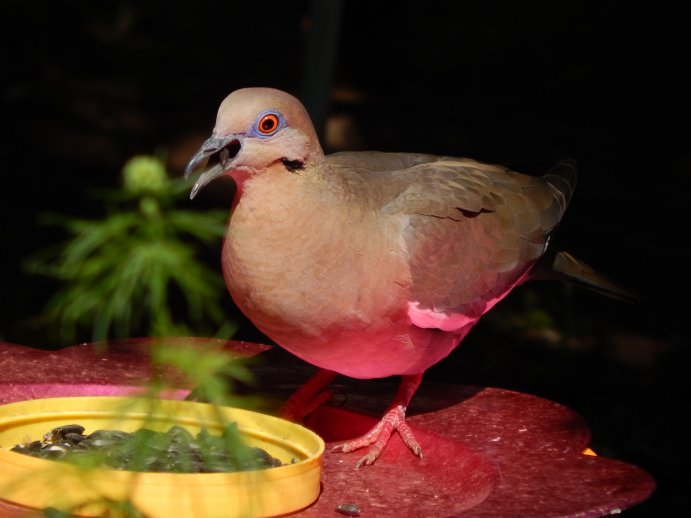
I’ve really never paid much attention to the little bee-like flies that buzz around flowering plants, but they’ve been so common this year I decided to take a closer look. I found out that they’re called Hoverflies (Syrphidae) and that there are about 6,000 species of them. Wow! I’ve taken a number of photos of the ones I’ve seen — which is a task in itself as they never seem to sit still! — and there’s no way I’m going to try to identify them beyond “hoverfly”. Here are a couple photos.
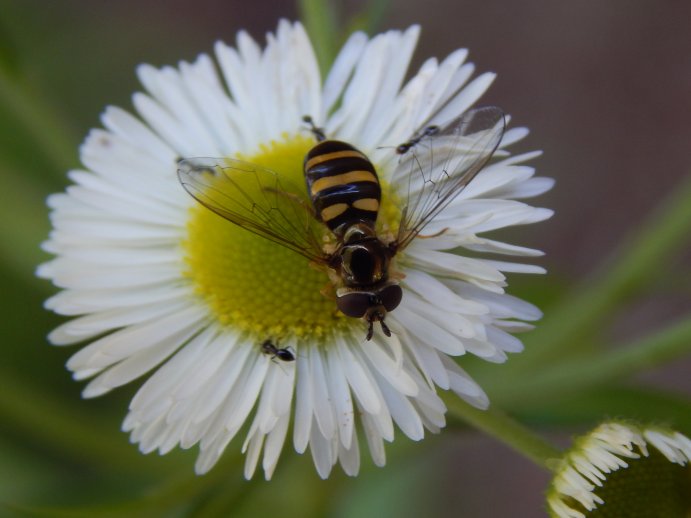
These two Hoverflies have different striping patterns. There are also some other dissimilarities. The fly in the photo above looks like he’s wearing some really nifty aviator glasses while the one below has a lot of yellow coloring around its mouth! Their wings look almost exactly the same, though. Hoverflies are beneficial insects that not only pollinate flowers but also prey on other insect pests.
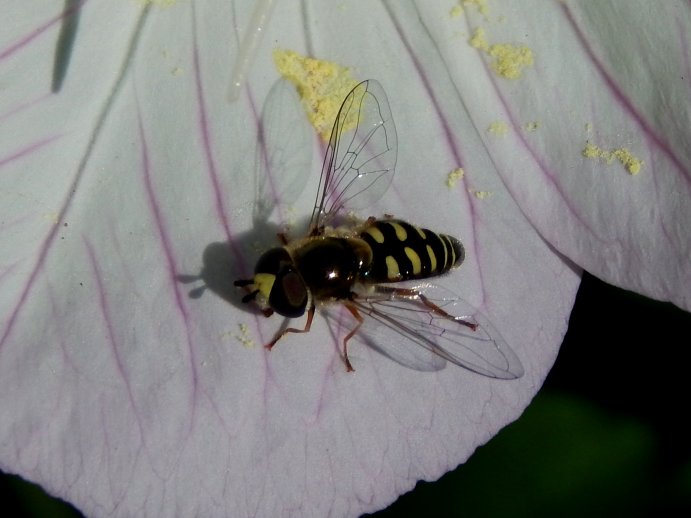
Here’s another bug I found on a Pink Evening Primrose (Oenothera rosea). It’s possibly a Fork-tailed Bush Katydid (Scudderia furcata) nymph, though that’s only a guess from some quick research. It’s quite pretty for as tiny as it is!
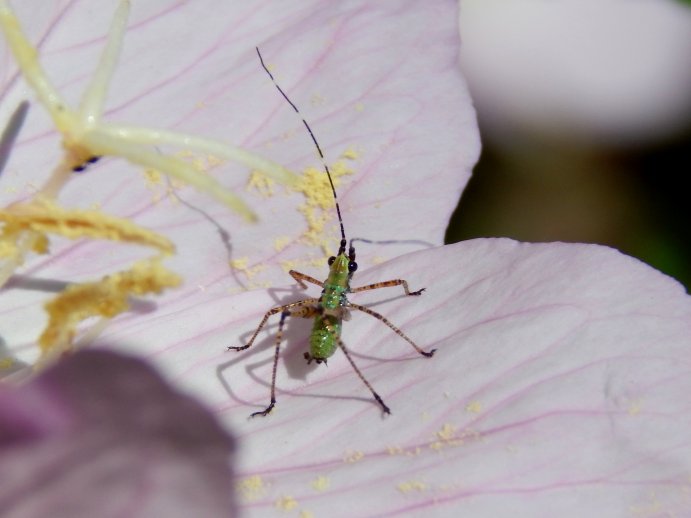
With that I bring this month’s edition of Wildlife Wednesday to a close — our electricity has already popped off once due to lightning (yay! rain and thunderstorms) as I sit here composing this on Tuesday evening — and I don’t want my post to disappear into the ether! As usual I had fun choosing which photos to post — almost as much fun as I had taking them — and will be back next month with more.
Please pay a visit to My Gardener Says… to see what types of wildlife other folks entertained during the past month. And once again — a great big thanks to Tina for hosting!












Your insect shots are just magnificent! Your bird shots are pretty great, too. 🙂 Lucky you to have had Monarchs–I only saw one, one time briefly in the garden. Grrrrrr.
The Red Admirals are such friendly little things, I think. They land on me when I’m out in the garden and flutter around me as I work. We’ve had quite a few as well.
Thanks for joining in a participating in Wildlife Wednesday!
LikeLike
Yes, the Red Admirals are everywhere right now! Don’t wear a flowered shirt outside, they’ll be all over you! Thanks for hosting.
LikeLike
Oh wow, some excellent photographs, I wish I could help with your shrub, but its not familiar, what does it smell of? As it came from the wild presumably its a native. I would be the same as you with the Hoverfly, trying to make positive identification is really tricky, but again your photo is really lovely. Is that the House Sparrow parents dropping chicks deposits out of the nest? Wonderful to have so many Butterfly visitors, its quite exposed here, we have till later in the year.
LikeLike
Thanks! I’m not sure the shrub has an aroma, I’ll have to check. As for the Sparrows, it’s probably the parents pooping while sitting in the entrance feeding the chicks! The butterflies are wonderful. There are several types I’ve seen but haven’t been able to get a photo of. They flit around so much!
LikeLike
So many wonderful shots – it would be impossible to pick a favorite. Like you I’m so happy to have any extra excuse to get out and photo-stalk the tiniest visitors to our garden beds. That last photo…I may have mis-identified a tree cricket nymph in my most recent post because my “cricket” sure looks a lot like your fork-tailed katydid. These bug kidlets! So tricky for me to get the adults sorted out but nymph forms – I honestly give up. : )
What fun to have seen poppa cardinal with young. We have a nesting pair every year and I too convince myself it is the same birds each time. Even if not, it is fun to imagine sharing the space with familiar friends. Happy May!
LikeLike
I like the tiny visitors! I’m not certain on the identification of the katydid nymph. I tried to find some IDs that looked like it, which was difficult, but the katydid came closest. And they seem to change so greatly so fast, appearing to stay in one stage for a very short time. At first I thought it was just a plain old adult bug…
LikeLike
A most enjoyable, and informative, post along with wonderful pictures. xx
LikeLike
Thanks, glad you enjoyed.
LikeLike
I loved reading this post and enjoyed the eye candy very much. Thank you! You have such a great variety of birds. It must sound a bit like a paradise in the morning. The white-crowned sparrow is a special treat to hear I imagine. As for the cardinals being the same family I can’t imagine why it wouldn’t be. They can live for a pretty long time and it looks like they’ve found a good safe place with you.
LikeLike
I think it’s noisier in the evenings than the mornings! The birds all seem to come to life just before the sun goes down. I love it! I wasn’t sure about the white-crowned sparrow’s vocals so I checked the Cornell site after you mentioned it. I think I’ve been associating their song with the mockingbirds! Now I’ll know what it is when I hear it.
LikeLike
I love the atmosphere of busy-ness at sundown — how all the birds seem to be darting around looking for a good spot for the evening — or whatever it is they are doing.
LikeLike
They do seem to get energetic as evening comes on, like they have a lot they have to get done before going to bed!
LikeLike
I am finally catching up a bit…so much happening there with butterflies and I love the little Katydid.
LikeLike
I’ve really been taken with all the butterflies this spring.
LikeLike